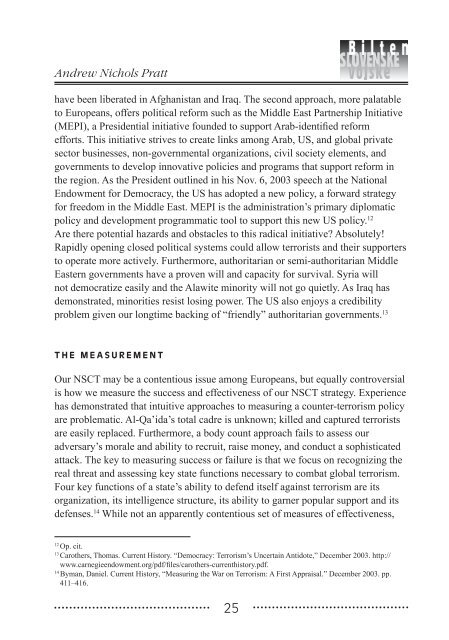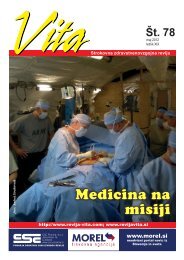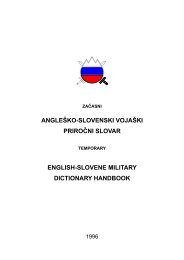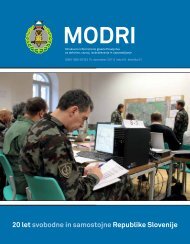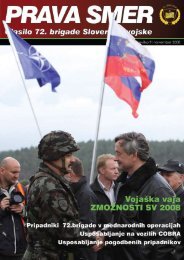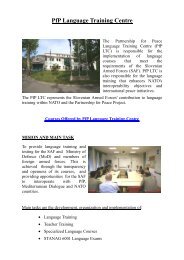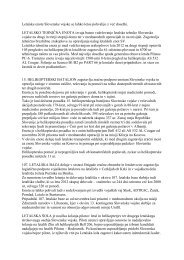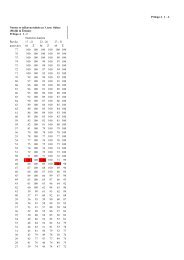Letnik 9/2, september 2007 - Slovenska vojska
Letnik 9/2, september 2007 - Slovenska vojska
Letnik 9/2, september 2007 - Slovenska vojska
Create successful ePaper yourself
Turn your PDF publications into a flip-book with our unique Google optimized e-Paper software.
Andrew Nichols Pratt<br />
have been liberated in Afghanistan and Iraq. The second approach, more palatable<br />
to Europeans, offers political reform such as the Middle East Partnership Initiative<br />
(MEPI), a Presidential initiative founded to support Arab-identified reform<br />
efforts. This initiative strives to create links among Arab, US, and global private<br />
sector businesses, non-governmental organizations, civil society elements, and<br />
governments to develop innovative policies and programs that support reform in<br />
the region. As the President outlined in his Nov. 6, 2003 speech at the National<br />
Endowment for Democracy, the US has adopted a new policy, a forward strategy<br />
for freedom in the Middle East. MEPI is the administration’s primary diplomatic<br />
policy and development programmatic tool to support this new US policy. 12<br />
Are there potential hazards and obstacles to this radical initiative Absolutely!<br />
Rapidly opening closed political systems could allow terrorists and their supporters<br />
to operate more actively. Furthermore, authoritarian or semi-authoritarian Middle<br />
Eastern governments have a proven will and capacity for survival. Syria will<br />
not democratize easily and the Alawite minority will not go quietly. As Iraq has<br />
demonstrated, minorities resist losing power. The US also enjoys a credibility<br />
problem given our longtime backing of “friendly” authoritarian governments. 13<br />
T H E M E A S U R E M E N T<br />
Our NSCT may be a contentious issue among Europeans, but equally controversial<br />
is how we measure the success and effectiveness of our NSCT strategy. Experience<br />
has demonstrated that intuitive approaches to measuring a counter-terrorism policy<br />
are problematic. Al-Qa’ida’s total cadre is unknown; killed and captured terrorists<br />
are easily replaced. Furthermore, a body count approach fails to assess our<br />
adversary’s morale and ability to recruit, raise money, and conduct a sophisticated<br />
attack. The key to measuring success or failure is that we focus on recognizing the<br />
real threat and assessing key state functions necessary to combat global terrorism.<br />
Four key functions of a state’s ability to defend itself against terrorism are its<br />
organization, its intelligence structure, its ability to garner popular support and its<br />
defenses. 14 While not an apparently contentious set of measures of effectiveness,<br />
12<br />
Op. cit.<br />
13<br />
Carothers, Thomas. Current History. “Democracy: Terrorism’s Uncertain Antidote,” December 2003. http://<br />
www.carnegieendowment.org/pdf/files/carothers-currenthistory.pdf.<br />
14<br />
Byman, Daniel. Current History, “Measuring the War on Terrorism: A First Appraisal.” December 2003. pp.<br />
411–416.<br />
25


